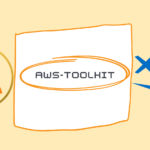WordPress is a popular content management system (CMS) that allows you to easily create and manage a website. However, as your site grows, the size of your media files can quickly become a bottleneck. To mitigate this issue, you can integrate your WordPress site with Amazon Web Services (AWS) Simple Storage Service (S3) to store and serve your media files. This can be done without using a plugin by following the steps outlined below.
Step 1: Create an AWS S3 Bucket
The first step is to create an S3 bucket in your AWS account. To do this, follow these steps:
- Log in to your AWS account.
- Go to the S3 service.
- Click on the “Create bucket” button.
- Give your bucket a unique name, select a region, and configure any other desired settings.
- Click on the “Create” button to create the bucket.
Step 2: Upload Your WordPress Media Files to the S3 Bucket
Once you have created your S3 bucket, you can upload your WordPress media files to it. You can do this using the AWS S3 CLI, the AWS S3 API, or by mounting the S3 bucket as a file system on your WordPress server.
If you choose to use the AWS S3 CLI, you can write a custom script that uses the AWS S3 CLI to transfer files from your WordPress site to your S3 bucket. For example, the following script can be used to upload all media files from your WordPress site to your S3 bucket:
#!/bin/bash
# Set the name of your WordPress site's media directory
media_dir=wp-content/uploads
# Set the name of your AWS S3 bucket
bucket_name=my-wordpress-media
# Upload all media files to the S3 bucket
aws s3 cp --recursive $media_dir s3://$bucket_name
If you choose to use the AWS S3 API, you can write a custom script that uses the AWS S3 API to transfer files from your WordPress site to your S3 bucket. For example, the following script can be used to upload all media files from your WordPress site to your S3 bucket using the AWS S3 API:
<?php
// Set the name of your WordPress site's media directory
$media_dir = 'wp-content/uploads';
// Set the name of your AWS S3 bucket
$bucket_name = 'my-wordpress-media';
// Use the AWS S3 API to upload all media files to the S3 bucket
$s3 = new S3Client([
'version' => 'latest',
'region' => 'us-west-2',
]);
$iterator = new RecursiveIteratorIterator(
new RecursiveDirectoryIterator($media_dir),
RecursiveIteratorIterator::SELF_FIRST
);
foreach ($iterator as $file) {
if ($file->isFile()) {
$s3->putObject([
'Bucket' => $bucket_name,
'Key' => $file->getFilename(),
'Body' => fopen($file->getPathname(), 'r'),
]);
}
}
Step 3: Configure Your WordPress Site
Once your media files have been uploaded to the S3 bucket, you need to configure your WordPress site to use the files stored in the S3 bucket. You can do this by changing the URLs of your media files to the URLs of the files stored in the S3 bucket.
To change the URLs of your media files, you can modify your WordPress database directly or use a plugin. To modify the database directly, follow these steps:
- Log in to your WordPress site as an administrator.
- Go to the “phpMyAdmin” tool.
- Select your WordPress database.
- Find the “posts” table and click on the “Browse” button.
- Find the field that contains the URLs of your media files and replace the URLs with the URLs of the files stored in the S3 bucket.
- Save your changes and exit the “phpMyAdmin” tool.
If you prefer to use a plugin, you can use the “Better Search Replace” plugin. This plugin allows you to easily search and replace URLs in your WordPress database. To use the plugin, follow these steps:
- Log in to your WordPress site as an administrator.
- Install and activate the “Better Search Replace” plugin.
- Go to the “Tools” menu and click on the “Better Search Replace” link.
- Enter the URL of your media files in the “Search for” field and the URL of the files stored in the S3 bucket in the “Replace with” field.
- Select the “posts” table and click on the “Run Search/Replace” button.
- Save your changes and exit the “Better Search Replace” plugin.
After following these steps, your WordPress site should be integrated with the AWS S3 bucket, and your media files should be stored and served from the S3 bucket. This will help to improve the performance and scalability of your WordPress site.
#Wordpress, #CMS, #AmazonWebServices, #AWSS3, #SimpleStorageService, #MediaFiles, #Performance, #Scalability, #ContentManagementSystem, #phpMyAdmin,#msrajawat298, #BetterSearchReplace, #Scripting, #API, #CLI, #garimarajput748, #garimarajput
See More Posts:
How to Ask Questions with ChatGPT: A Guide to Asking Questions with OpenAI’s Language Model
Upgrade Your Workflows – Explore 9 Free AI Tools
Preparing for a PHP Developer (WordPress) Interview: Questions and Case Studies
How to Deploy lambda function using aws-toolkit using vsCode
garimarajput748 | info.garimarajput | msrajawat298 | garima | wordpress developer | php developer











